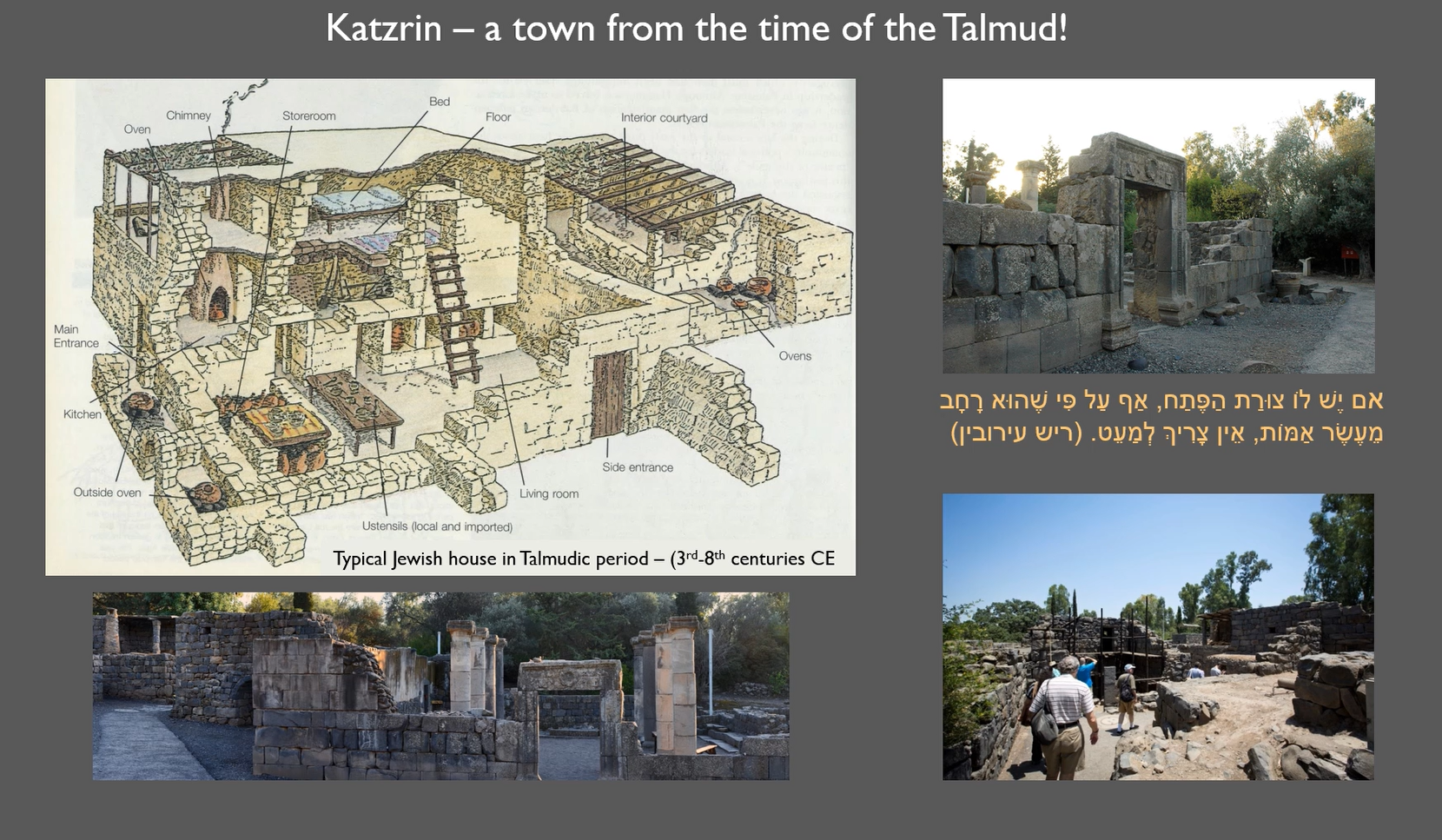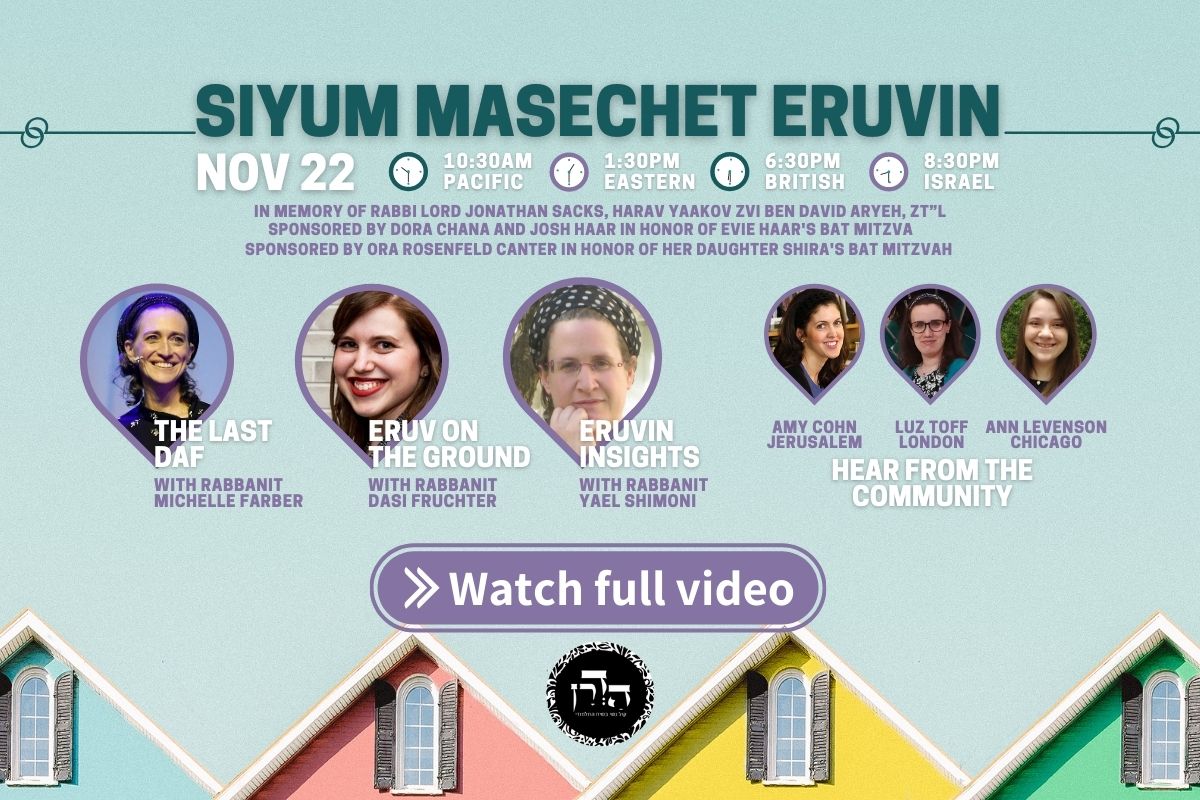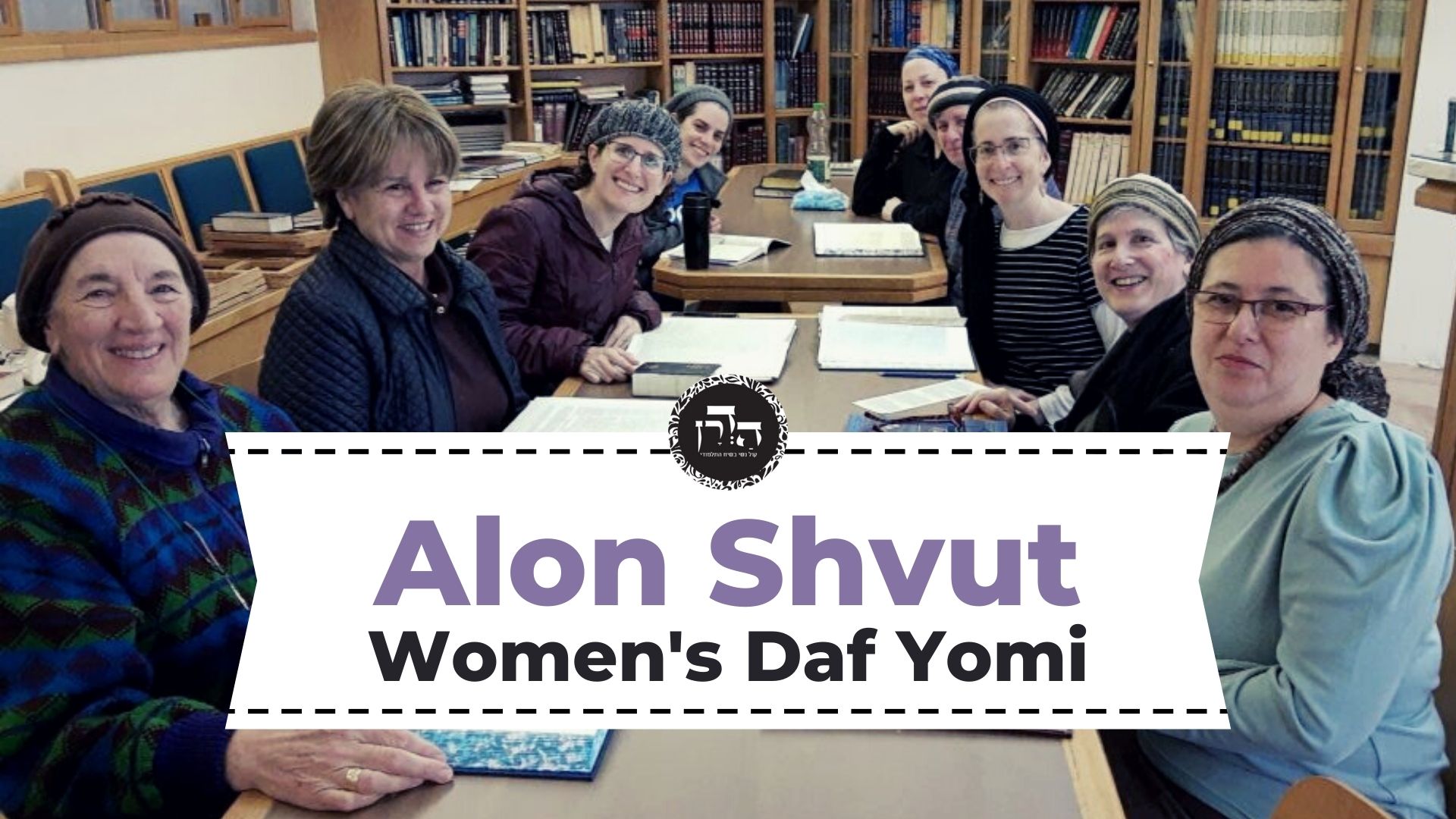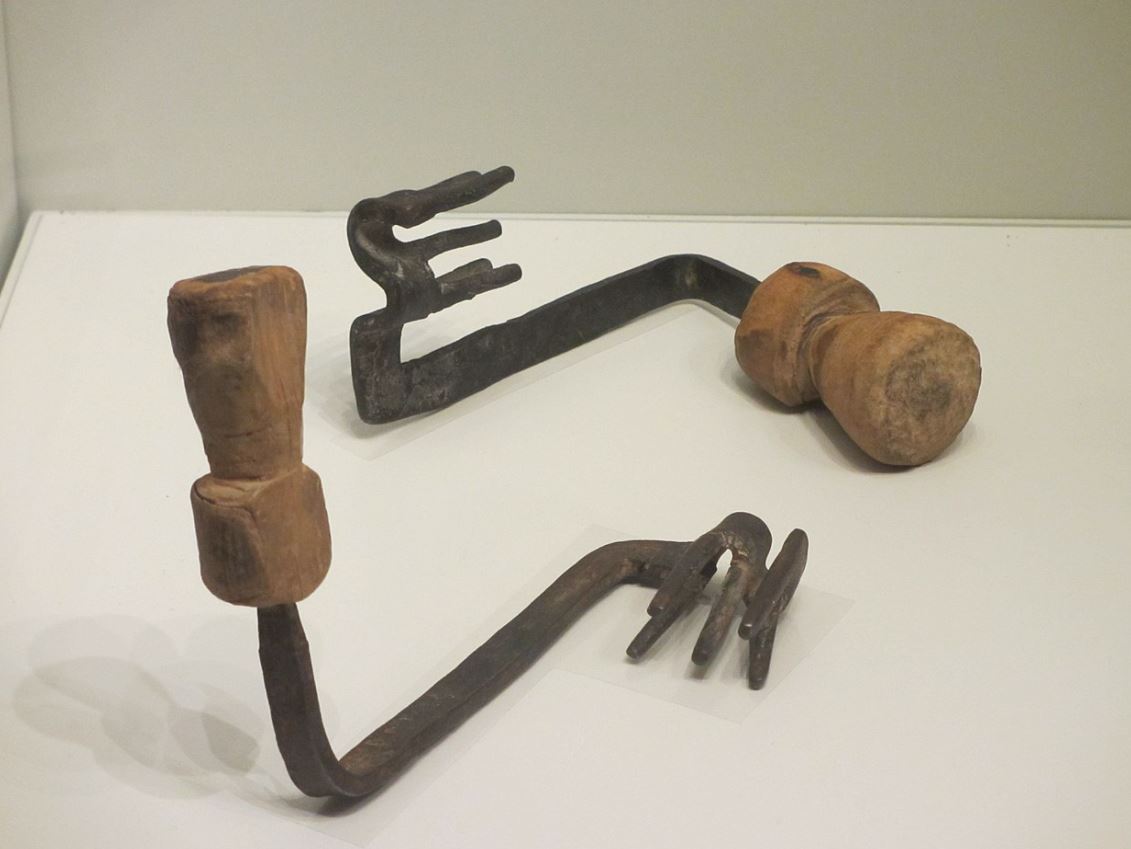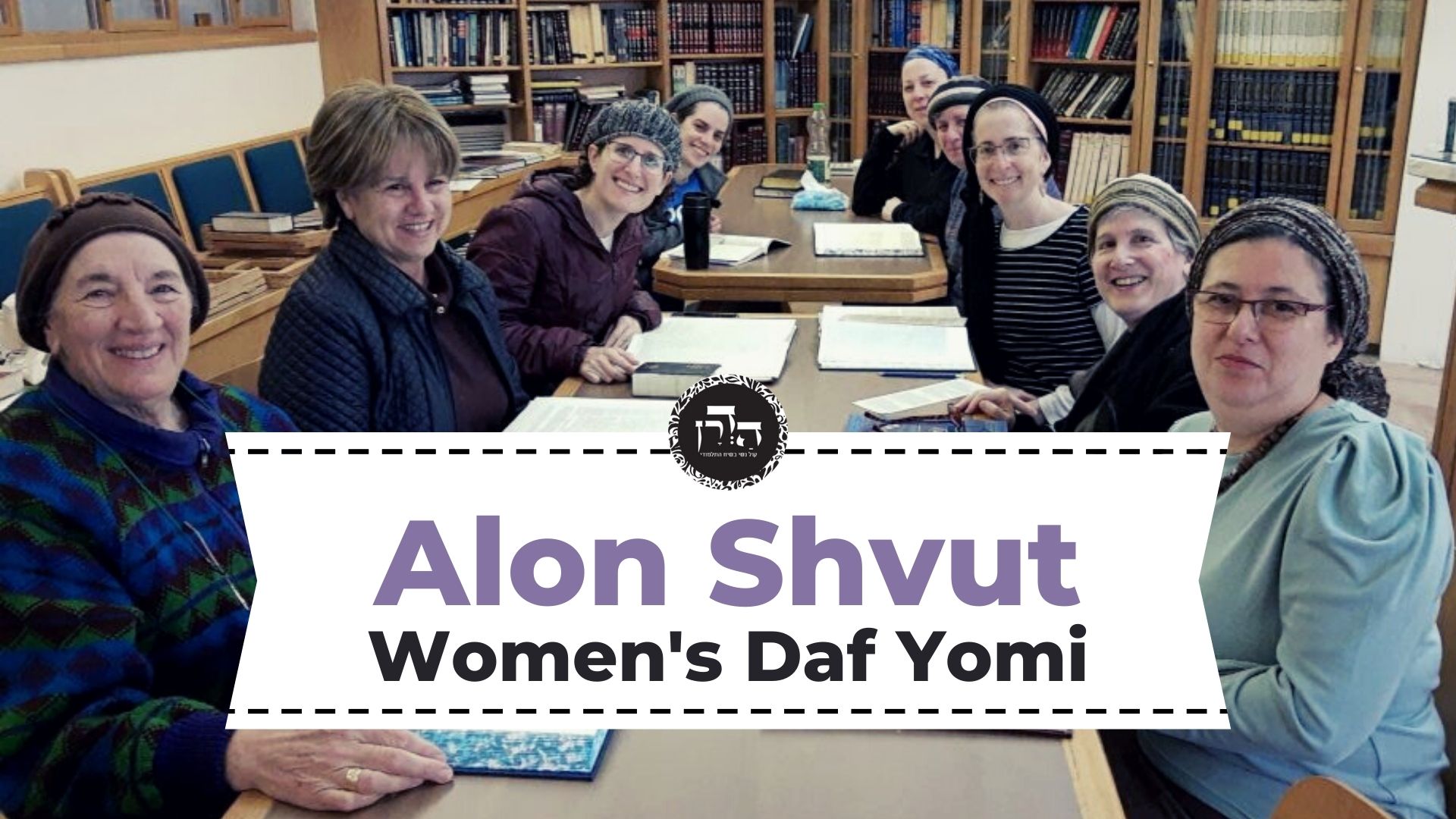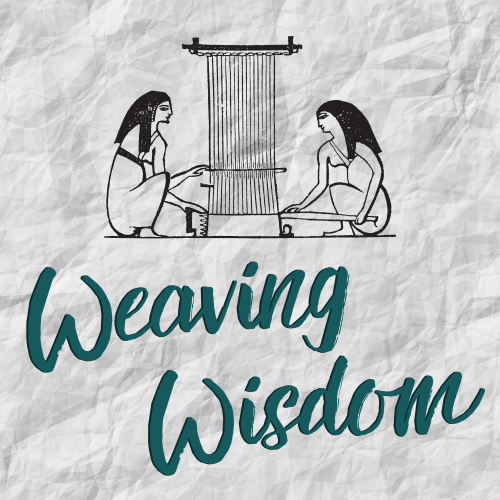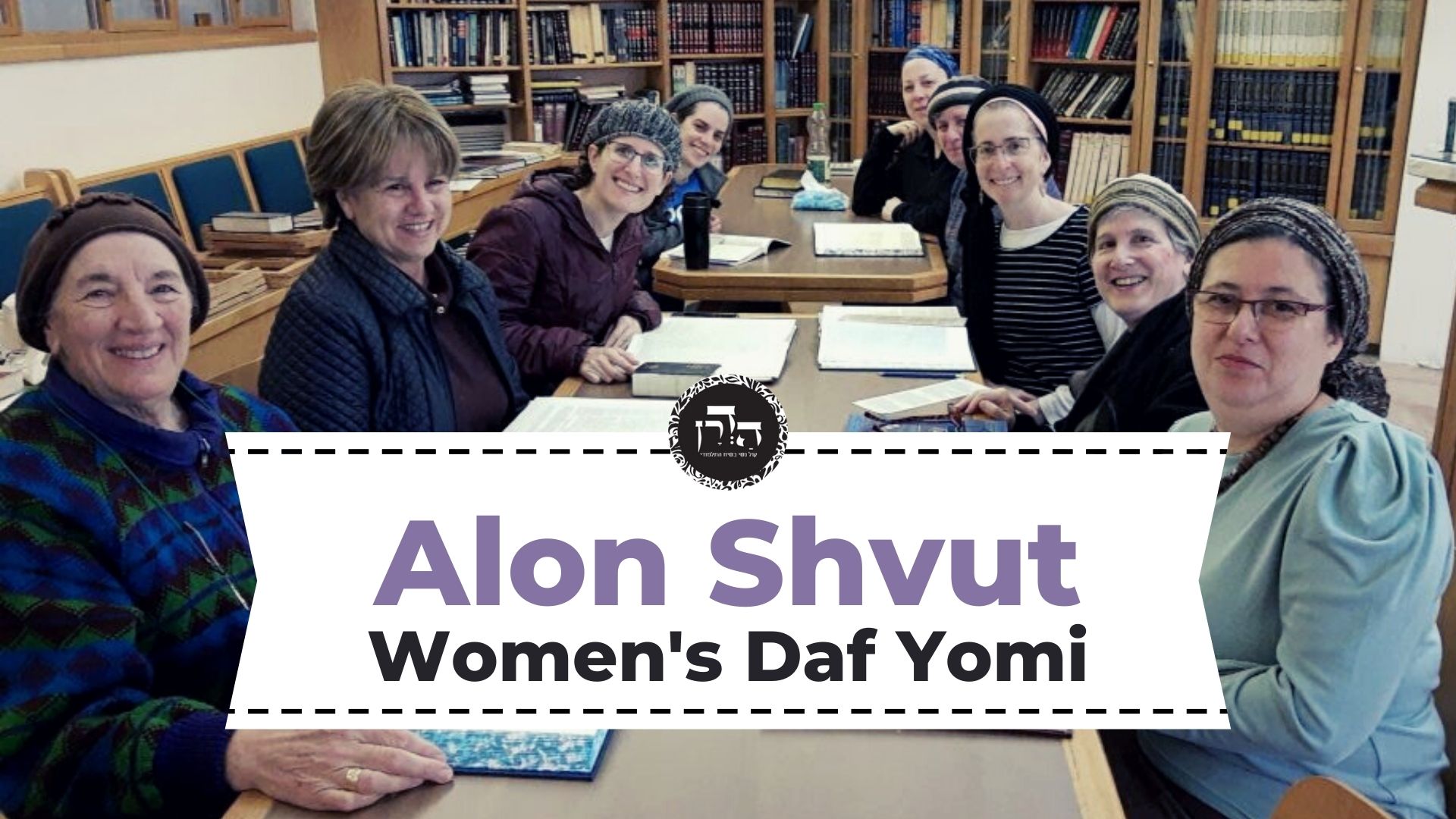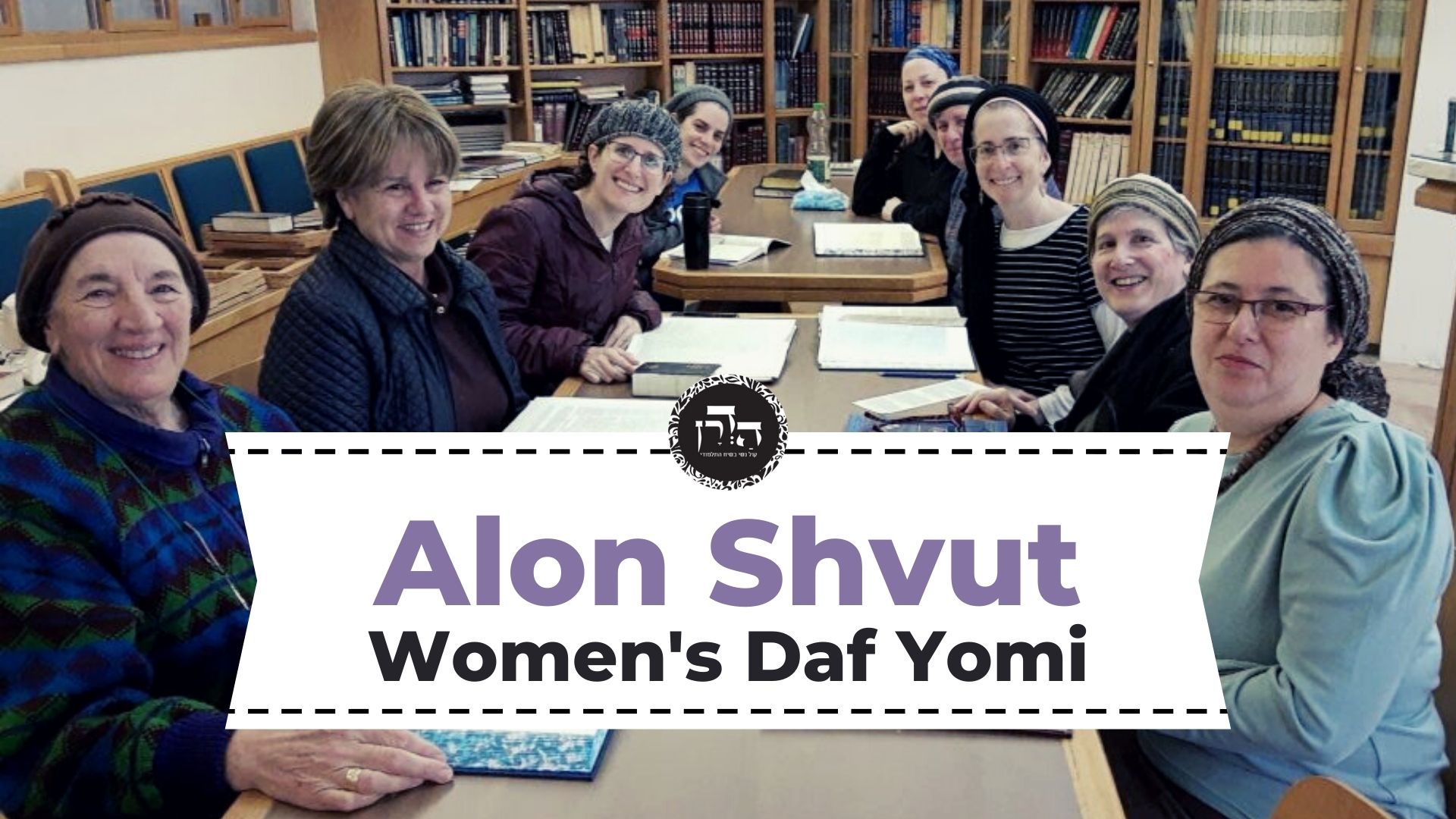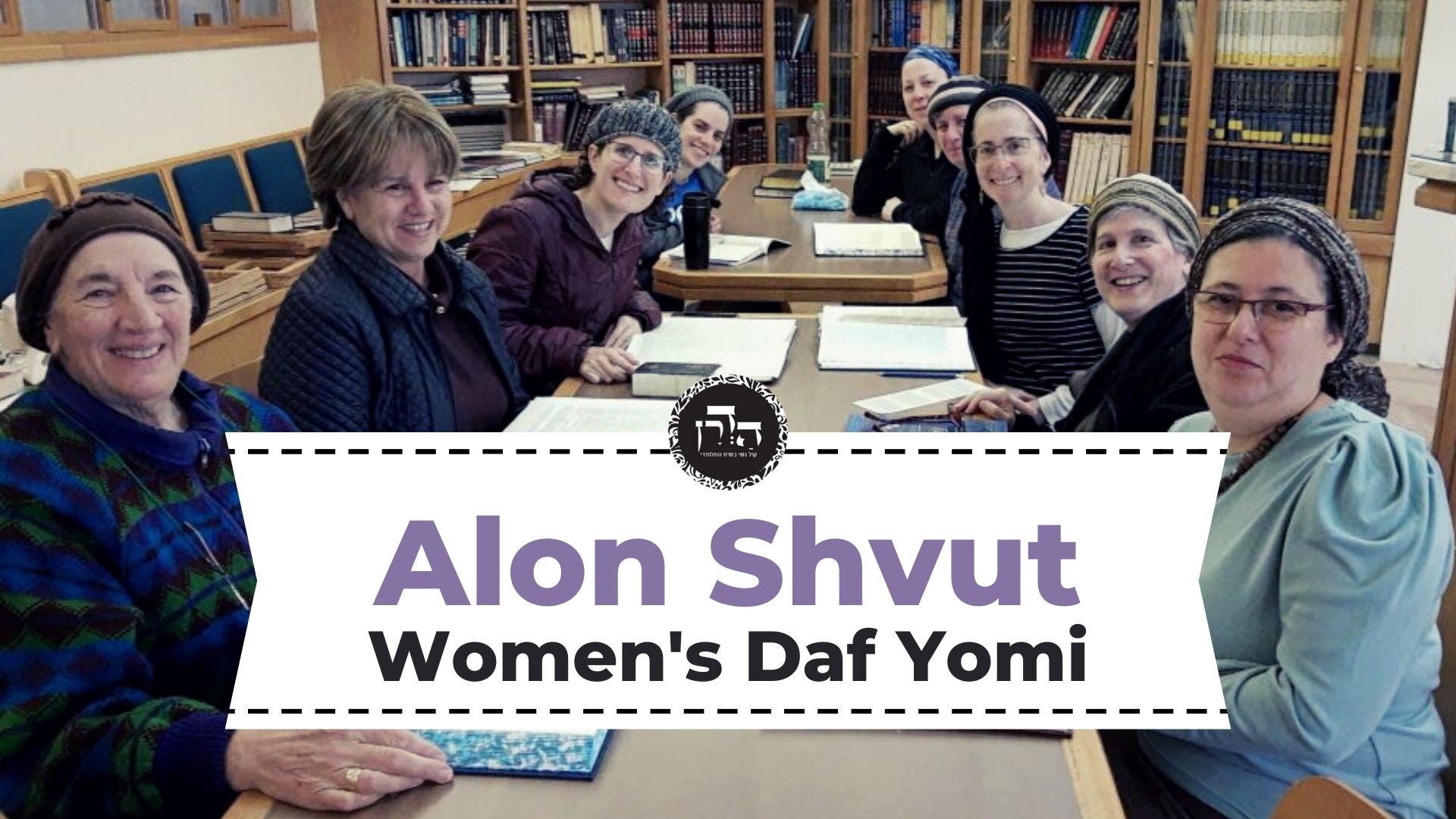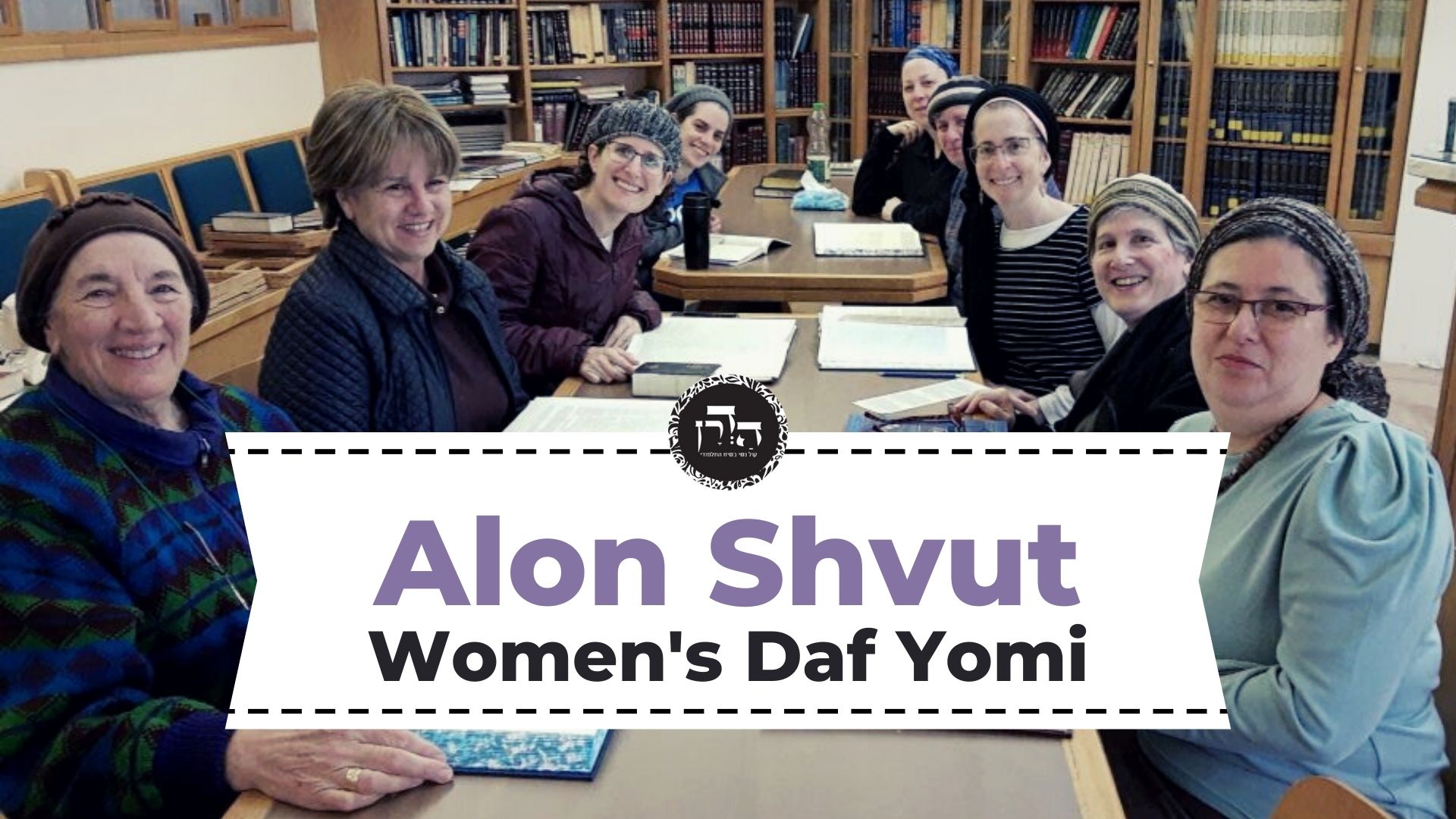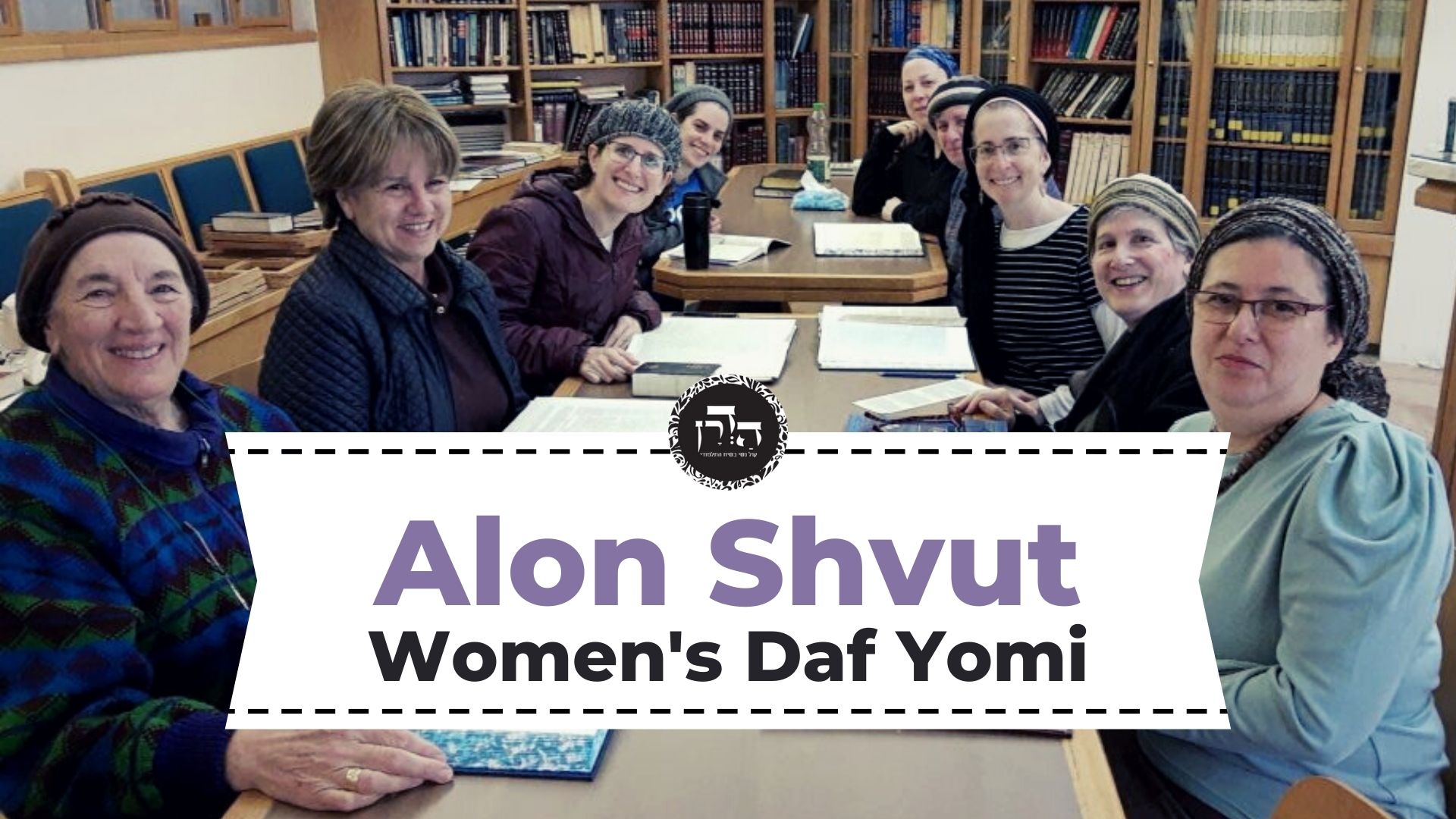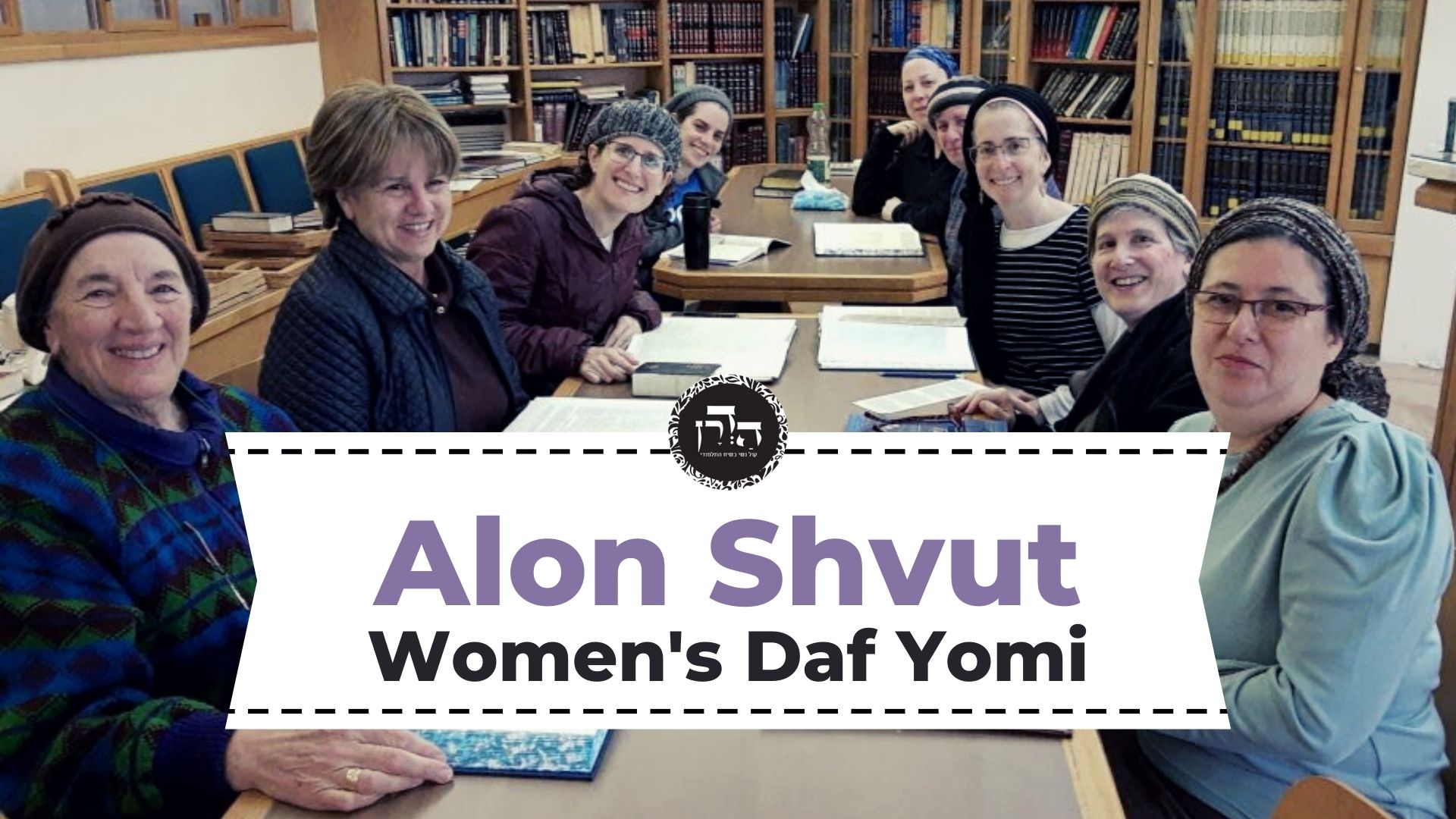The gemara continues its discussion regarding objects that can make the wall more accessible – objects jutting out of the wall – do they need ladders – situated where? If the height of the wall is 19 or more than 20, how many items jutting out of the wall need to be there and at what height and position? If there is a beam in the public domain that is 10 high and 4×4 wide and is considered a private domain for purposes of carrying between it and the public domain, if there is a peg on top of it, does that limits its use and therefore its size and would it become an exempt space? There are different opinions about this. When one puts in a ladder – at what angle and at what height would it diminish the space (what would then be the necessary length of the ladder)? Rav Yosef asks Rabba a number of questions of cases where the ladder does not have a minimum of 4 but something else can help it to be as if it has four – would these work? He raises a number of different situations. If a ladder was made out of a tree (which is forbidden by rabbinic law to use of Shabbat) or an Ashera tree (which was used for idol worship and is forbidden to benefit from), is it considered that the courtyards are accessible to each other theoretically, even if not practically. Various opinions are brought. Does it connect to other similar debates regarding eruv techumim in a tree or in a grave, that is also forbidden to benefit from? If there is a ditch 10 high and 4×4 wide, that separates two courtyards, one cannot make an eruv together. What if it was filled with straw or dirt? Is there a difference between the two? Why? If there is a beam that connects the two sides, then one can make an eruv together or separately.
Want to dedicate learning? Get started here:


Today’s daily daf tools:
Today’s daily daf tools:
Delve Deeper
Broaden your understanding of the topics on this daf with classes and podcasts from top women Talmud scholars.
New to Talmud?
Check out our resources designed to help you navigate a page of Talmud – and study at the pace, level and style that fits you.
The Hadran Women’s Tapestry
Meet the diverse women learning Gemara at Hadran and hear their stories.
Eruvin 78
זִיז הַיּוֹצֵא מִן הַכּוֹתֶל אַרְבָּעָה עַל אַרְבָּעָה, וְהִנִּיחַ עָלָיו סוּלָּם כׇּל שֶׁהוּא — מִיעֲטוֹ.
If a projection four by four handbreadths in area extends from a wall, and one placed a ladder of any width against it, if the rungs of the ladder are less than three handbreadths apart, he has diminished the height of the wall by means of this ladder and projection.
וְלָא אֲמַרַן אֶלָּא דְּאוֹתְבֵיהּ עֲלֵיהּ, אֲבָל אוֹתְבֵיהּ בַּהֲדֵיהּ אַרְווֹחֵי אַרְוְחֵיהּ.
The Gemara qualifies this statement: And we said this only in a case where one placed the ladder directly against the projection, so that the ladder serves as a passage to it. However, if he placed it adjacent to the projection, he has merely widened the projection, while the ladder remains separate from it. Consequently, the projection does not have any connection to the ground, and a projection that is not within three handbreadths of the ground does not diminish the height of a wall.
וְאָמַר רַב נַחְמָן אָמַר רַבָּה בַּר אֲבוּהּ: כּוֹתֶל תִּשְׁעָה עָשָׂר — צָרִיךְ זִיז אֶחָד לְהַתִּירוֹ.
And Rav Naḥman said that Rabba bar Avuh said: If a wall between two courtyards is nineteen handbreadths high, it requires one projection to render the use of the wall permitted. If there is a single projection in the middle of the wall, with a ladder of any width resting against it, it is considered a passageway between the courtyards, as the projection is within ten handbreadths of the top of the wall.
כּוֹתֶל עֶשְׂרִים — צָרִיךְ שְׁנֵי זִיזִים לְהַתִּירוֹ. אָמַר רַב חִסְדָּא: וְהוּא שֶׁהֶעֱמִידָן זֶה שֶׁלֹּא כְּנֶגֶד זֶה.
However, if the wall is twenty handbreadths high, it requires two projections to render the use of the wall permitted, one within ten handbreadths of the ground, and the other within ten handbreadths of the top of the wall. Rav Ḥisda said: And this applies only where he positioned the projections not directly one above the other, so that it is possible to use a ladder to climb from one projection to the other.
אָמַר רַב הוּנָא: עַמּוּד בִּרְשׁוּת הָרַבִּים, גָּבוֹהַּ עֲשָׂרָה וְרָחָב אַרְבָּעָה, וְנָעַץ בּוֹ יָתֵד כׇּל שֶׁהוּא — מִיעֲטוֹ.
Rav Huna said: If a pillar in the public domain is ten handbreadths high and four handbreadths wide, so that it is considered a private domain, and one drove a stake of any size into the top of it, he has diminished its area. The usable area is now less than four handbreadths, and therefore the pillar is no longer considered a private domain.
אָמַר רַב אַדָּא בַּר אַהֲבָה: וּבְגָבוֹהַּ שְׁלֹשָׁה. אַבָּיֵי וְרָבָא דְּאָמְרִי תַּרְוַיְיהוּ: אַף עַל פִּי שֶׁאֵין גָּבוֹהַּ שְׁלֹשָׁה.
Rav Adda bar Ahava said: This applies only if the stake is at least three handbreadths high. If it is less than three handbreadths high, it is considered part of the top of the pillar, based on the principle of lavud. This is in contrast to Abaye and Rava, who both say: Even if the stake is not three handbreadths high, the pillar is no longer considered a private domain.
מַאי טַעְמָא: לָא מִשְׁתַּמֵּשׁ לֵיהּ.
What is the reason for the opinion of Abaye and Rava? It is that the pillar is no longer fit to be used, as a surface of four by four handbreadths is suitable for use only when it is level. If it has even a small projection, it is no longer usable.
רַב אָשֵׁי אָמַר: אֲפִילּוּ שֶׁגָּבוֹהַּ שְׁלֹשָׁה, מַאי טַעְמָא: אֶפְשָׁר דְּתָלֵי בֵּיהּ מִידֵּי.
Rav Ashi said: Even a stake three handbreadths high does not diminish the area of the pillar. What is the reason for this? It is that it is possible to hang an item on it. Although it is no longer possible to rest objects on top of the pillar, it is still useful in some way.
אֲמַר לֵיהּ רַב אַחָא בְּרֵיהּ דְּרָבָא לְרַב אָשֵׁי: מִלְּאוֹ כּוּלּוֹ בִּיתֵדוֹת מַהוּ?
Rav Aḥa, son of Rava, said to Rav Ashi: According to your opinion, if he filled it entirely with stakes, i.e., if he drove so many stakes into the top of the post that it was completely filled, what is the halakha?
אֲמַר לֵיהּ: לָא שְׁמִיעַ לָךְ הָא דְּאָמַר רַבִּי יוֹחָנָן: בּוֹר וְחוּלְיָיתָהּ מִצְטָרֵף לַעֲשָׂרָה.
Rav Ashi said to him: Did you not hear that which Rabbi Yoḥanan said? He said that a pit and its embankment of stone around the edge join together to complete the measure of ten handbreadths. Similarly, the width of the embankment joins with the diameter of the pit to complete the measure of four by four handbreadths necessary to define the pit as a private domain.
וְאַמַּאי, הָא לָא מִשְׁתַּמֵּשׁ לֵיהּ? אֶלָּא מַאי אִית לָךְ לְמֵימַר — דְּמַנַּח מִידֵּי וּמִשְׁתַּמֵּשׁ, הָכָא נָמֵי דְּמַנַּח מִידֵּי וּמִשְׁתַּמֵּשׁ.
There, too, one can raise the question: But why? He cannot use the embankment, as most of the area is the empty space of the pit. Rather, what have you to say, i.e., how can you solve this problem? The solution is that he places an item, e.g., a board, over the mouth of the pit, and then he can make use of it. Here, too, he places an item over the stakes and can make use of the pillar.
אָמַר רַב יְהוּדָה אָמַר שְׁמוּאֵל: כּוֹתֶל עֲשָׂרָה — צָרִיךְ סוּלָּם אַרְבָּעָה עָשָׂר לְהַתִּירוֹ. רַב יוֹסֵף אָמַר: אֲפִילּוּ שְׁלֹשָׁה עָשָׂר וּמַשֶּׁהוּ.
Rav Yehuda said that Shmuel said: If a wall is ten handbreadths high, it requires a ladder fourteen handbreadths high, so that one can place the ladder at a diagonal against the wall. The ladder then functions as a passageway and thereby renders the use of the wall permitted. Rav Yosef said: Even a ladder with a height of thirteen handbreadths and a bit is enough, as it is sufficient if the ladder reaches within one handbreadth of the top of the wall.
אַבָּיֵי אָמַר: אֲפִילּוּ אַחַד עָשָׂר וּמַשֶּׁהוּ.
Abaye said: Even a ladder that is only eleven handbreadths and a bit suffices, as the ladder will still reach a height of over seven handbreadths, i.e., within three handbreadths of the top of the wall.
רַב הוּנָא בְּרֵיהּ דְּרַב יְהוֹשֻׁעַ אָמַר: אֲפִילּוּ שִׁבְעָה וּמַשֶּׁהוּ.
Rav Huna, son of Rav Yehoshua, said: Even if the ladder is only seven handbreadths and a bit it is sufficient, as he can stand the ladder upright against the wall. Since it will reach within three handbreadths of the top of the wall, the principle of lavud applies. Therefore, even a ladder placed in this manner is considered a valid passageway between the two courtyards.
אָמַר רַב: סוּלָּם זָקוּף — מְמַעֵט. גְּמָרָא, וְלָא יָדַעְנָא מַאי טַעְמָא.
Similarly, Rav said: An upright ladder effectively diminishes the height of a wall, as it creates a passageway. I received this teaching as a tradition, but I do not know what the reason is, as people do not generally climb ladders positioned in this manner.
אָמַר שְׁמוּאֵל: וְלָא יָדַע אַבָּא טַעְמָא דְּהָא מִלְּתָא?! מִידֵּי דְּהָוֵה אַאִיצְטְבָא עַל גַּבֵּי אִיצְטְבָא.
Shmuel said: Does Abba, i.e., Rav, actually not know the reason for this matter? The reason here is just as it is in the case of a platform above another platform. Even though it is not easy to climb, since it provides steps that can be climbed, albeit with difficulty, it is considered a valid passageway.
אָמַר רַבָּה אָמַר רַבִּי חִיָּיא: דְּקָלִים שֶׁבְּבָבֶל — אֵינָן צְרִיכִין קֶבַע. מַאי טַעְמָא: כְּבֵידָן קוֹבַעְתָּן.
Rabba said that Rabbi Ḥiyya said: The trunks of palm trees in Babylonia that were placed next to a wall between two courtyards so that people could climb on them and pass from one courtyard to another do not need to be established permanently and attached to the ground; rather, they serve to diminish the wall as they are. What is the reason for this? It is that their heaviness establishes them as connected to the ground. Although it is permitted to handle them, nevertheless, since their weight makes them difficult to move, they are considered fixed in place.
וְרַב יוֹסֵף אָמַר רַבִּי אוֹשַׁעְיָא: סוּלָּמוֹת שֶׁבְּבָבֶל — אֵינָן צְרִיכִין קֶבַע. מַאי טַעְמָא: כְּבֵידָן קוֹבַעְתָּן.
And similarly, Rav Yosef said that Rabbi Oshaya said: Ladders in Babylonia do not need to be established and fixed permanently in place. What is the reason for this? It is that their heaviness establishes them, as the ladders in Babylonia were typically large and heavy.
מַאן דְּאָמַר סוּלָּמוֹת, כׇּל שֶׁכֵּן דְּקָלִים. וּמַאן דְּאָמַר דְּקָלִים, אֲבָל סוּלָּמוֹת לָא.
The Gemara comments: With regard to the one who said that Babylonian ladders do not need to be fixed in place, all the more so would he agree that the trunks of palm trees, which are placed there from the outset for this purpose, are considered fixed, as both are extremely heavy and also designed to remain in place. On the other hand, the one who said that the trunks of palm trees need not be fixed permanently in the ground, spoke only with regard to palm trees. However, as for ladders, no, they are not considered fixed in place. A ladder, even a heavy one, is designed to be moved from place to place.
בְּעָא מִינֵּיהּ רַב יוֹסֵף מֵרַבָּה: סוּלָּם מִכָּאן וְסוּלָּם מִכָּאן וְקַשִּׁין בָּאֶמְצַע, מַהוּ?
Rav Yosef raised a dilemma before Rabba: If there is a narrow ladder measuring less than two handbreadths wide on one side, and a similarly narrow ladder on the other side, and there are rungs of woven straw in the middle between them which would not support a person’s weight, what is the halakha? Are the two ladders considered a single unit, forming a ladder four handbreadths wide, which serves to diminish the height of a wall?
אֲמַר לֵיהּ: אֵין כַּף הָרֶגֶל עוֹלָה בָּהֶן.
Rabba said to him: The sole of the foot cannot climb upon them. A person usually places his foot in the middle of a ladder. Since the middle of this ladder is made of straw, then although it appears to be four handbreadths wide, it is not fit for use and does not diminish the height of the wall.
קַשִּׁין מִכָּאן וְקַשִּׁין מִכָּאן וְסוּלָּם בָּאֶמְצַע, מַהוּ? אֲמַר לֵיהּ: הֲרֵי כַּף הָרֶגֶל עוֹלָה בָּהֶן.
Rav Yosef continued to ask: And what if there were rungs of straw on one side and rungs of straw on the other side, and a narrow ladder less than four handbreadths wide in the middle, and their combined width is four handbreadths? What is the halakha in this case? Rabba said to him: The sole of the foot can climb upon them, and the ladder appears to be four handbreadths wide. Therefore, it serves to diminish the height of the wall.
חָקַק לְהַשְׁלִים בַּכּוֹתֶל, בְּכַמָּה? אֲמַר לֵיהּ: בַּעֲשָׂרָה.
Rav Yosef further asked: If the ladder resting against the wall was less than four handbreadths wide, and one dug out grooves in the wall as extensions of the rungs of the ladder to complete the measure, how high must this hollowed-out section be to consider the ladder a valid passageway between the two courtyards? Rabba said to him: If it is ten handbreadths high and four handbreadths wide, it is considered a passageway.
אֲמַר לֵיהּ: חֲקָקוֹ כּוּלּוֹ בַּכּוֹתֶל, בְּכַמָּה? אֲמַר לֵיהּ: מְלֹא קוֹמָתוֹ. וּמַאי שְׁנָא? אֲמַר לֵיהּ: הָתָם מִסְתַּלֵּק לֵיהּ, הָכָא לָא מִסְתַּלֵּק לֵיהּ.
Rav Yosef said to him: If there was no ladder, and one dug out the entire ladder in the wall, so that all the steps are grooves in the wall, how much must he hollow out? Rabba said to him: Those steps must reach the full height of the wall. Rav Yosef asked: And what is the difference in this case? Why must the steps reach higher in this case than in the case where the hollowed-out section was merely an extension of an existing ladder? Rabba said to him: There, where there is a ladder, it is easy to climb to the top of the wall; however, here, where there are only grooves in the wall, it is not easy to climb. If one cannot reach the top of the wall, the steps are not considered a passageway between the courtyards.
בְּעָא מִינֵּיהּ רַב יוֹסֵף מֵרַבָּה: עֲשָׂאוֹ לָאִילָן סוּלָּם, מַהוּ?
Rav Yosef raised a dilemma before Rabba: If one designated a tree as a ladder, what is the halakha? Given that it is prohibited to climb a tree on Shabbat, if a tree stands next to a wall and it is easy to climb, is it considered with regard to the halakhot of Shabbat as an opening in the wall that can serve as a passageway between the two courtyards?
תִּיבְּעֵי לְרַבִּי, תִּיבְּעֵי לְרַבָּנַן.
Let the dilemma be raised according to the opinion of Rabbi Yehuda HaNasi, who maintains that a joining of Shabbat boundaries [eiruv teḥumin] placed in a tree is valid; and let the dilemma be raised according to the opinion of the Rabbis, who disagree.
תִּיבְּעֵי לְרַבִּי: עַד כָּאן לָא קָאָמַר רַבִּי הָתָם כׇּל דָּבָר שֶׁהוּא מִשּׁוּם שְׁבוּת לֹא גָּזְרוּ עָלָיו — הָנֵי מִילֵּי בֵּין הַשְּׁמָשׁוֹת, אֲבָל כּוּלֵּי יוֹמָא — לָא.
The Gemara elaborates: Let the dilemma be raised according to the previously stated opinion of Rabbi Yehuda HaNasi. Rabbi Yehuda HaNasi only stated there that with regard to anything that is prohibited on Shabbat due to a rabbinic decree [shevut], the Sages did not prohibit it during twilight. Therefore, in Rabbi Yehuda HaNasi’s opinion, it is permitted to use an eiruv that was deposited in a tree, as the use of a tree is prohibited on Shabbat by rabbinic decree. However, this applies only in that case, as the eiruv takes effect during the twilight period. Since there is doubt with regard to whether that period is considered day or night, the decree is not in force, and the eiruv is therefore valid. However, in this case, where the opening must be valid for the entire day, Rabbi Yehuda HaNasi would not rule that the decree does not apply. Since it is prohibited by rabbinic decree to climb a tree on Shabbat, a tree cannot be considered a valid passageway.
אוֹ דִילְמָא אֲפִילּוּ לְרַבָּנַן: פִּיתְחָא הוּא, וְאַרְיָא הוּא דִּרְבִיעַ עֲלֵיהּ.
Or perhaps it may be argued that even according to the opinion of the Rabbis, this tree is considered an opening. They may have said that a joining of Shabbat boundaries placed in a tree is not valid only because the eiruv must actually be accessible during twilight, and in that case it is not, due to the rabbinic decree. However, in this case, where it is not necessary to make actual use of the tree, they would agree that a tree that serves as a ladder is a valid entrance, but a lion crouches upon it. Just as a lion crouching at an opening does not thereby nullify its status as an entrance, although in practice no one can pass through it, so too, in the case of the tree, the prohibition against climbing it does not nullify its status as a passageway.
עֲשָׂאוֹ לַאֲשֵׁירָה סוּלָּם, מַהוּ? תִּיבְּעֵי לְרַבִּי יְהוּדָה, תִּיבְּעֵי לְרַבָּנַן.
Rav Yosef further inquired: If one designated a tree worshipped as part of idolatrous rites [asheira], from which it is forbidden to derive benefit, as a ladder, what is the halakha? Is it considered a valid passageway in the wall with regard to the halakhot of Shabbat? Here, too, let the dilemma be raised according to the opinion of Rabbi Yehuda, and let the dilemma be raised according to the opinion of the Rabbis.
תִּיבְּעֵי לְרַבִּי יְהוּדָה: עַד כָּאן לָא קָאָמַר רַבִּי יְהוּדָה הָתָם דְּמוּתָּר לִקְנוֹת בַּיִת בְּאִיסּוּרֵי הֲנָאָה, אֶלָּא הָתָם, דְּבָתַר דִּקְנָה לֵיהּ עֵירוּב לָא נִיחָא לֵיהּ דְּלִינְּטַר.
The Gemara elaborates: Let the dilemma be raised according to the previously stated opinion of Rabbi Yehuda. Rabbi Yehuda only stated there that it is permitted to acquire, i.e., make use of, a house for the purposes of establishing an eiruv even if it is among the items from which it is prohibited to derive benefit, such as a grave. This statement applies only there, with regard to acquiring an eiruv in that location, since after the eiruv has acquired a place of residence for him, it is not important to him that it is guarded. He requires the grave only for the moment of the acquisition of the eiruv, and what happens to it afterward is of no consequence to him. However, here, since one desires the continued presence of the ladder, it is possible that even Rabbi Yehuda would agree that one may not rely on an asheira, as one may not climb and make use of it, since it is prohibited to derive benefit from it.
אוֹ דִילְמָא אֲפִילּוּ לְרַבָּנַן: פִּיתְחָא הוּא, וְאַרְיָא דִּרְבִיעַ עֲלֵיהּ.
Or perhaps it may be argued that even though according to the opinion of the Rabbis it is prohibited to use a grave to acquire an eiruv, here they would agree that the asheira is an opening, but a lion crouches upon it, and this does not nullify its status as an opening.
אֲמַר לֵיהּ: אִילָן מוּתָּר, וַאֲשֵׁירָה אֲסוּרָה. מַתְקֵיף לַהּ רַב חִסְדָּא: אַדְּרַבָּה, אִילָן שֶׁאִיסּוּר שַׁבָּת גּוֹרֵם לוֹ — נִיתְּסַר.
Rabba said to him: A tree is permitted for use as a ladder, but an asheira is prohibited. Rav Ḥisda strongly objects to this: On the contrary, a tree, with regard to which a Shabbat prohibition causes it to be prohibited, should be prohibited, so that it will not be said that a Shabbat prohibition has been disregarded in a case involving the halakhot of Shabbat.
אֲשֵׁירָה שֶׁאִיסּוּר דָּבָר אַחֵר גּוֹרֵם לוֹ — לָא נִיתְּסַר.
And the converse is also true: An asheira, with regard to which something else, a halakha unrelated to the halakhot of Shabbat, causes it to be prohibited, should not be prohibited. Rather, it should be considered an opening with regard to Shabbat.
אִיתְּמַר נָמֵי, כִּי אֲתָא רָבִין, אָמַר רַבִּי אֶלְעָזָר, וְאָמְרִי לַהּ אָמַר רַבִּי אֲבָהוּ אָמַר רַבִּי יוֹחָנָן: כֹּל שֶׁאִיסּוּר שַׁבָּת גָּרַם לוֹ — אָסוּר, כֹּל שֶׁאִיסּוּר דָּבָר אַחֵר גָּרַם לוֹ — מוּתָּר.
Indeed, it was also stated: When Ravin came from Eretz Yisrael to Babylonia, he said that Rabbi Elazar said, and some say that Rabbi Abbahu said that Rabbi Yoḥanan said: Anything with regard to which a prohibition of Shabbat causes it to be prohibited is prohibited; and conversely, anything with regard to which something else causes it to be prohibited is permitted.
רַב נַחְמָן בַּר יִצְחָק מַתְנֵי הָכִי: אִילָן — פְּלוּגְתָּא דְּרַבִּי וְרַבָּנַן. אֲשֵׁירָה — פְּלוּגְתָּא דְּרַבִּי יְהוּדָה וְרַבָּנַן.
However, in contrast to Rav Yosef, Rav Naḥman bar Yitzḥak taught as follows: These questions are indeed dependent on the known disputes. Whether a tree serving as a ladder constitutes a valid opening is the subject of a dispute between Rabbi Yehuda HaNasi and the Rabbis; Rabbi Yehuda HaNasi permits it and the Rabbis prohibit it. The debate with regard to whether or not an asheira is considered an opening is the subject of a dispute between Rabbi Yehuda, who permits using items from which it is prohibited to derive benefit for the sake of an eiruv, and the Rabbis, who prohibit making an eiruv with such items.
מַתְנִי׳ חָרִיץ שֶׁבֵּין שְׁתֵּי חֲצֵירוֹת, עָמוֹק עֲשָׂרָה וְרוֹחַב אַרְבָּעָה — מְעָרְבִין שְׁנַיִם, וְאֵין מְעָרְבִין אֶחָד. אֲפִילּוּ מָלֵא קַשׁ אוֹ תֶּבֶן. מָלֵא עָפָר אוֹ צְרוֹרוֹת — מְעָרְבִין אֶחָד, וְאֵין מְעָרְבִין שְׁנַיִם.
MISHNA: With regard to a ditch between two courtyards that is ten handbreadths deep and four handbreadths wide, it is considered a full-fledged partition, and the residents of the courtyard establish two eiruvin, one for each courtyard, but they may not establish one eiruv. Even if the ditch is filled with straw or hay, it is not regarded as sealed and is therefore not nullified. However, if the ditch is filled with dirt or pebbles, the residents establish one eiruv, but they may not establish two eiruvin, as the ditch is nullified and considered nonexistent.
נָתַן עָלָיו נֶסֶר שֶׁרָחָב אַרְבָּעָה טְפָחִים, וְכֵן שְׁתֵּי גְזוּזְטְרָאוֹת זוֹ כְּנֶגֶד זוֹ — מְעָרְבִין שְׁנַיִם, וְאִם רָצוּ מְעָרְבִין אֶחָד. פָּחוֹת מִכָּאן — מְעָרְבִין שְׁנַיִם, וְאֵין מְעָרְבִין אֶחָד.
If one placed a board four handbreadths wide across the ditch so that he could cross it, and similarly, if two balconies [gezuztraot] in two different courtyards are opposite one another, and one placed a board four handbreadths wide between them, the residents of the courtyards or balconies establish two eiruvin, and if they desire, they may establish one, as the board serves as an opening and a passageway between them. If the width of the plank is less than four handbreadths, the residents establish two eiruvin, but they may not establish one eiruv.
גְּמָ׳ וְתֶבֶן לָא חָיֵיץ? וְהָא אֲנַן תְּנַן: מַתְבֵּן שֶׁבֵּין שְׁתֵּי חֲצֵירוֹת גָּבוֹהַּ עֲשָׂרָה טְפָחִים — מְעָרְבִין שְׁנַיִם וְאֵין מְעָרְבִין אֶחָד!
GEMARA: The Gemara wonders: Does hay not constitute a proper filling to seal the ditch? Didn’t we learn in the following mishna: With regard to a haystack ten handbreadths high that stands between two courtyards, the residents of the two courtyards establish two eiruvin, but they may not establish one eiruv. This indicates that hay can create a valid partition.
אָמַר אַבָּיֵי: לְעִנְיַן מְחִיצָה — כּוּלֵּי עָלְמָא לָא פְּלִיגִי דְּהָוְיָא מְחִיצָה, אֲבָל לְעִנְיַן חֲצִיצָה, אִי בַּטְּלֵיהּ — חָיֵיץ, וְאִי לָא בַּטְּלֵיהּ — לָא חָיֵיץ.
Abaye said that the matter should be understood as follows: With regard to a partition, everyone agrees that hay is a partition and that it divides between the courtyards as long as it is placed there. But with regard to filling the ditch so that it is considered sealed, one must distinguish between two cases: If one explicitly nullified the hay and decided to leave it there, it fills and seals the ditch; however, if he did not nullify it but intends to remove the hay from the ditch, it does not fill it, and the ditch is not considered sealed.
מָלֵא עָפָר. וַאֲפִילּוּ בִּסְתָמָא? וְהָתְנַן: בַּיִת שֶׁמִּילְּאָהוּ תֶּבֶן אוֹ צְרוֹרוֹת וּבִיטְּלוֹ — בָּטֵל.
It is written in the mishna: If the ditch is filled with dirt or pebbles, it is considered sealed. The Gemara asks: Does this apply even if one did not specify his intention to leave it there? Didn’t we learn in a mishna with regard to the ritual impurity of a corpse: If there is a house that one filled with hay or pebbles, and he nullified the hay or pebbles and decided to leave them in the house, then the house (Rambam) is nullified and is no longer considered a house with partitions? Generally, a house containing a corpse is ritually impure on the inside but does not impart impurity to the surrounding area. However, in this case, the house is considered an enclosed grave that imparts ritual impurity to its surroundings.
בִּיטְּלוֹ — אִין,
And one can infer from the mishna: If he nullified the hay or pebbles, yes, the house is nullified and considered sealed.



